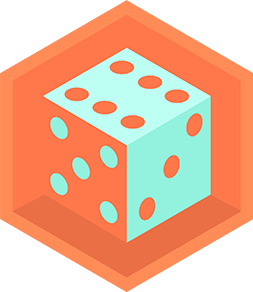Let the Customer Purchase a Pizza from Your Pizzeria!
Set up a pretend pizzeria, make menus and play money, take orders, assemble paper or toy pizzas, and practice pricing and giving change.



Step-by-step guide to Let the Customer Purchase a Pizza from Your Pizzeria
Step 1
Gather all your materials and put them in one spot so you are ready to build your pizzeria.
Step 2
Choose a table or box and arrange it as your pizzeria counter.
Step 3
Make a pizzeria sign from colored paper with your shop name.
Step 4
Tape or prop your sign so everyone can see your pizzeria name.
Step 5
Decorate each paper plate or cardstock circle to look like a pizza base.
Step 6
Cut colored paper into small shapes to make pretend toppings like pepperoni mushrooms and peppers.
Step 7
Write your menu on colored paper listing pizza names sizes and prices.
Step 8
Make play money by cutting blank paper into bill shapes and writing values on them.
Step 9
Prepare an order pad by writing the word Order on the top sheet of your sticky notes or notebook.
Step 10
Ask a friend family member or stuffed animal to choose a pizza and toppings.
Step 11
Write the customer’s choices clearly on your order pad.
Step 12
Assemble the pizza by placing the correct toppings on the pizza base to match the order.
Step 13
Ask the customer to pay with play money and accept their payment.
Step 14
Count the play money to find the total and give the correct change back to the customer.
Step 15
Share your finished pizzeria and your paper or toy pizza on DIY.org
Final steps
You're almost there! Complete all the steps, bring your creation to life, post it, and conquer the challenge!


Help!?
What can we use instead of cardstock circles or colored paper if we don't have them?
Use clean paper plates from the materials list or cut circles from a cereal box or cardboard and color them with markers to make sturdy pizza bases.
My toppings keep sliding off the pizza bases — how can I fix that during the 'Assemble the pizza' step?
Stick paper toppings down with small dots of glue, double-sided tape, or a bit of sticky tack so the toppings from the 'Cut colored paper into small shapes' step stay in place.
How can I change the activity for younger children or make it more challenging for older kids?
For younger kids, pre-cut the toppings and limit choices to two or three when asking them to choose a pizza, while older kids can add prices to the menu and use the play money and order pad to calculate totals and change.
What are simple ways to personalize or extend the pizzeria activity after sharing on DIY.org?
Personalize and extend the project by decorating the pizzeria sign with stickers or glitter, creating loyalty cards and a delivery shoebox 'oven,' and adding a toy phone and menu board for role-play and taking more complex orders.
Watch videos on how to Let the Customer Purchase a Pizza from Your Pizzeria
Pizza Fractions Activity | Learn Fractions | Educational Videos for Children
Facts about pretend play and early money skills for kids
🧮 Giving change is just subtraction and coin counting — practicing with play money helps kids speed up their mental math.
💸 Play money is commonly used to train cashiers and teach kids how to count bills and give change — it's real practice with no risk!
🎭 Pretend play, like running a pizzeria, helps kids build social skills, storytelling, language, and basic math in a fun way.
🍕 The Margherita pizza was named for Queen Margherita of Savoy in 1889, and its red, white, and green toppings mirror the Italian flag!
🏪 The word "pizzeria" is Italian, and many pizzerias use a long-handled wooden peel to slide pizzas into very hot ovens.
How do I set up a pretend pizzeria and play the pizza shop game with my child?
What materials do I need to set up a pretend pizzeria with menus and play money?
What ages is a pretend pizzeria game suitable for?
What are the benefits of playing a pretend pizzeria with my child?


One subscription, many ways to play and learn.
Only $6.99 after trial. No credit card required



